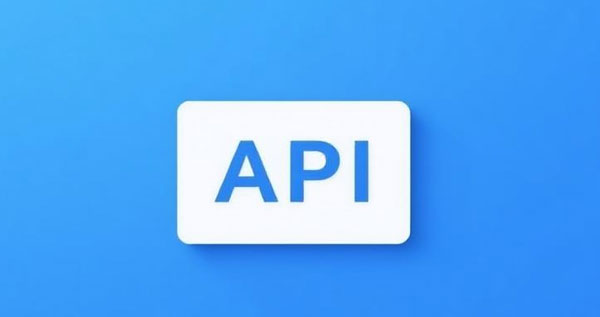Walmart API Call in Practice: Easily Connect Retail Data with Python and cURL
In today's information-driven world, data exchange and sharing have become increasingly important. APIs (Application Programming Interfaces) serve as the bridge to make this possible. If you’ve ever ordered takeout, you've probably experienced the power of APIs indirectly. Today, let’s dive into the world of Walmart APIs and learn how to connect retail data through Python and cURL.
API Calls: From "Ordering" to Retail Data Bridge
Imagine you’re at a restaurant ordering food. You tell the waiter what you want, and the waiter communicates your request to the kitchen. The kitchen prepares the food and brings it to your table. The whole process is quite similar to an API call.
An API acts like the “waiter” by connecting you to a system. You make a request (like placing an order), and the system processes it and returns a response (like the kitchen preparing the food). Walmart’s API is the bridge that connects you with Walmart’s system. Through the API, you can get product information, update stock, and even manage orders.
There are two common types of API requests:
GET request: You "request" data from Walmart's system, like checking the stock of a product. A GET request fetches the relevant information.
POST request: You "send" data to Walmart's system, like submitting a new order or updating stock information. A POST request is used for this.
After understanding these basic concepts, let’s see how to implement these API calls with Python and cURL.
Preparing Your Toolkit: Python and cURL
Before you begin making API calls, you need to have the right tools in place. You can choose between Python or cURL, each suited to different scenarios.
Python: A Programming Language for Automation and Data Processing
Python is widely used in data analysis and automation. If you have some programming experience, Python will be your trusty assistant when interacting with Walmart's API. All you need is the requests library to send HTTP requests and handle API responses.
Installation Steps:
pip install requestscURL: A Command-Line Tool for Quick Tests
cURL is a powerful command-line tool that sends requests and receives responses from servers. It’s perfect for quickly testing APIs or verifying an API endpoint without a programming environment.
Installation Steps:
cURL is usually pre-installed on most operating systems' terminals, so you can use it straight away.
Note: Whether you're using Python or cURL, you’ll need a Walmart API key, which you can get from Walmart’s developer portal or use the API key provided by Luckdata.
Using Luckdata API as an Alternative to Walmart's Native API
In addition to Walmart's native API, Luckdata offers an easier way to access Walmart product data. Luckdata supports several programming languages, including Python, cURL, Java, C#, JavaScript, PHP, and Go, and provides multiple API versions to meet different needs.
Luckdata Walmart API Pricing and Versions
Luckdata offers several subscription plans for its Walmart API, based on request limits and access needs:
Free Version: 100 credits/month, 1 request per second.
Basic Version: $87/month, 58,000 credits/month, 5 requests per second.
Pro Version: $299/month, 230,000 credits/month, 10 requests per second.
Ultra Version: $825/month, 750,000 credits/month, 15 requests per second.
Regardless of which version you choose, you’ll have access to a full set of features. Below is an example of how to make requests using the Luckdata API.
Using Python for a GET Request (Luckdata API)
Now, let's see how to use Python to fetch product information through Luckdata’s API. Luckdata provides a simple and easy-to-use interface. Here’s an example of a GET request:
Steps:
Import the requests library
import requestsSet the API URL and headers
headers = {'X-Luckdata-Api-Key': 'your luckdata key' # Replace with your Luckdata API key
}
url = 'https://luckdata.io/api/walmart-API/get_vwzq?url={url}?classType=VARIANT' # Replace with the actual product URL
Send the GET request and receive the response
response = requests.get(url, headers=headers)Check the response and parse the returned data
if response.status_code == 200:data = response.json()
print(f"Product Name: {data['name']}")
print(f"Price: ${data['price']}")
else:
print(f"Request failed, status code: {response.status_code}")
Sample JSON Response:
{"itemId": "12345",
"name": "Wireless Mouse",
"price": 19.99,
"stock": "Available"
}
In this example, you can use the Luckdata API instead of Walmart’s native API to retrieve product details more efficiently.
Using cURL for a POST Request (Luckdata API)
Next, let’s see how to use cURL to send a POST request and update stock information. Here's an example of how to do this using Luckdata's API:
Steps:
Open the terminal and prepare to enter a cURL command.
Set up the POST request by specifying the URL and request body (for updating product stock information).
curl -X POST "https://luckdata.io/api/walmart-API/get_vwzq?url={url}?sku={ID}&page=1" \-H "X-Luckdata-Api-Key: your luckdata key" \
-H "Content-Type: application/json" \
-d '{"stock": "Out of Stock"}'
Execute and view the response
{"status": "success",
"message": "Stock updated successfully"
}
POST Request Characteristics:
POST requests are used to "send" data, usually in JSON format. When making a POST request, make sure the request body is formatted correctly so the API can parse and handle it properly.
Example: Python Implementation for a GET Request and Response Parsing
To help you better understand the process, here's a full example in Python. Suppose you want to query information about a product from Walmart and parse the returned JSON data.
Python Code (Using Walmart API):
import requests# Set the API endpoint and authentication
url = "https://api.walmart.com/v1/items/12345"
headers = {
"Authorization": "Bearer your_api_key", # Replace with your API key
"Accept": "application/json"
}
# Send a GET request
response = requests.get(url, headers=headers)
# Check the response and parse the JSON
if response.status_code == 200:
data = response.json()
print(f"Product Name: {data['name']}")
print(f"Price: ${data['price']}")
else:
print(f"Request failed, status code: {response.status_code}")
Parsing:
itemId: Product IDname: Product Nameprice: Product Price (USD)stock: Product Stock Status
With this code, you can retrieve basic product information and handle it for further processing, such as saving the data or analyzing it.
Using Luckdata API as an Alternative to Walmart’s Native API
Luckdata provides a more convenient way to access Walmart product data. Here's how you can query and handle product information using the Luckdata API instead of Walmart’s native API.
Python Code (Using Luckdata API):
import requests# Set the API endpoint and authentication
headers = {
'X-Luckdata-Api-Key': 'your luckdata key' # Replace with your Luckdata API key
}
url = 'https://luckdata.io/api/walmart-API/get_vwzq?url={url}?classType=VARIANT' # Replace with the actual product URL
# Send a GET request
response = requests.get(url, headers=headers)
# Check the response and parse the JSON
if response.status_code == 200:
data = response.json()
print(f"Product Name: {data['name']}")
print(f"Price: ${data['price']}")
else:
print(f"Request failed, status code: {response.status_code}")
Parsing:
itemId: Product IDname: Product Nameprice: Product Price (USD)stock: Product Stock Status
Example: Sending a POST Request to Update Stock (Luckdata API)
If you need to update product stock via Luckdata’s API, refer to the following POST request example:
curl -X POST "https://luckdata.io/api/walmart-API/get_vwzq?url={url}?sku={ID}&page=1" \-H "X-Luckdata-Api-Key: your luckdata key" \
-H "Content-Type: application/json" \
-d '{"stock": "Out of Stock"}'
Once successfully executed, the API will return a response like this:
{"status": "success",
"message": "Stock updated successfully"
}
Common Pitfalls:
API Key and URL Validity: Before making any request, ensure that your API key is valid and the URL is correct.
Request Limits: Walmart’s API has request limits, so avoid making frequent calls to prevent being blocked.
Error Handling: When using Python, be sure to add error handling code to avoid crashes due to network issues or server problems.
Efficiency Tips:
Try Different Endpoints: Luckdata's API offers a rich set of features, so experimenting with different endpoints will help you get the most out of the API.
Batch Requests: For larger datasets, consider batch requests to improve efficiency.
From API Calls to Innovation: Start Your API Journey
With today's tutorial, you’ve learned how to make GET and POST requests using Python and cURL, parse API responses, and use the Luckdata API to update Walmart stock information. These skills will not only help you navigate Walmart's API but also lay the foundation for automating inventory management, order updates, and more.
As you deepen your understanding of APIs, you’ll be able to write more advanced automation scripts and use cURL for efficient API testing. I hope Luckdata’s API helps you interact with retail data more easily!
Articles related to APIs :
Introduction to Walmart API: A Digital Bridge Connecting the Retail Giant
Walmart Review Data Applications and Future: A Key Resource for Brand Success
Walmart API Beginner's Guide: Easily Register, Obtain Keys, and Authenticate
Exploring Walmart API Core Endpoints: Unlocking the Secret Channel of Retail Data
A Complete Guide to Scraping Walmart Product Reviews Using Python
How to Get Walmart API for Free? A Complete Guide with Implementation
How to Scrape Walmart Product Data Using Python: Comprehensive Guide and Implementation




